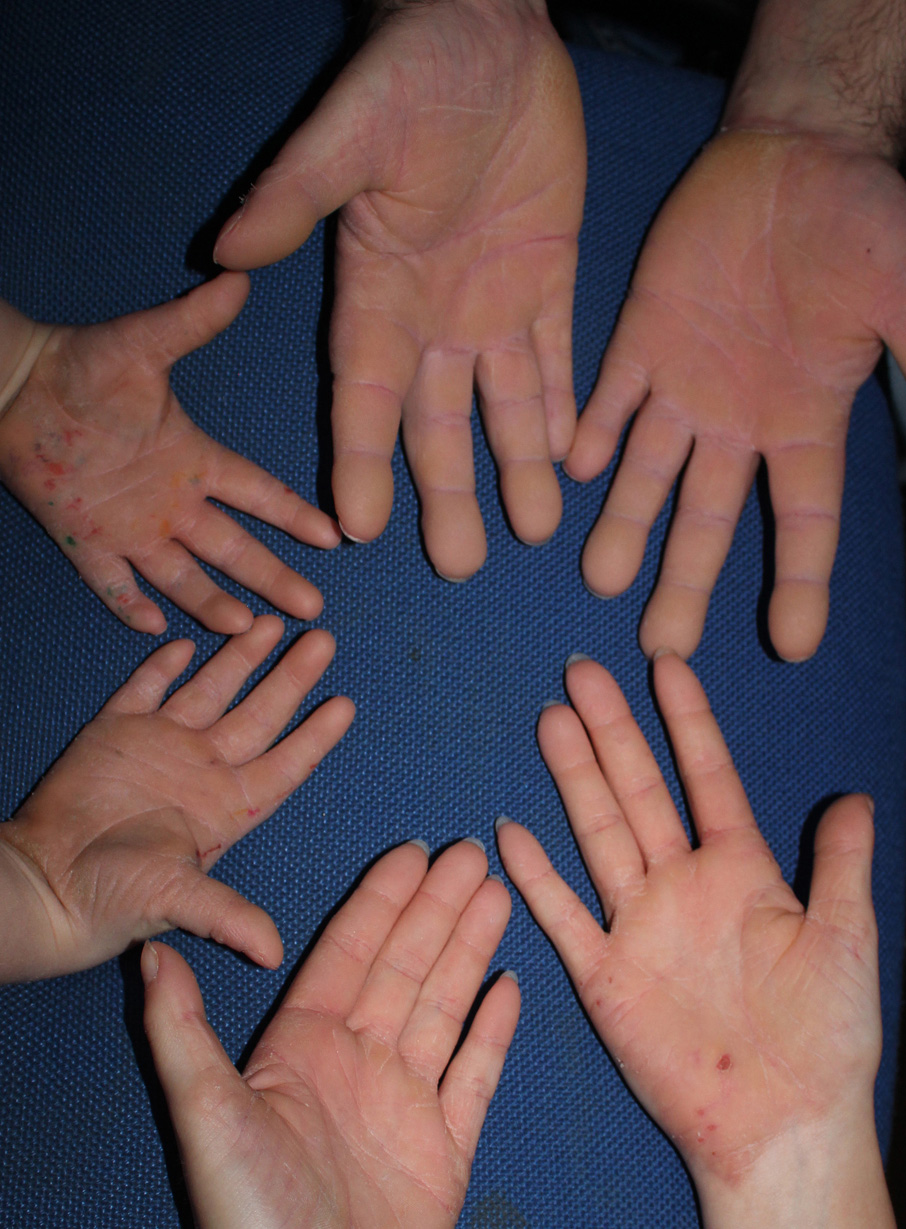Palmoplantar keratoderma with tachycardia and digital clubbing.

Downloads
DOI:
https://doi.org/10.26326/2281-9649.29.1.1947How to Cite
Abstract
Epidermolytic palmoplantar keratoderma (EPPK) is the most frequent form of inherited keratoderma and is transmitted by an autosomal dominant trait. In the literature there are cases of EPPK associated with arrhythmogenic cardiopathy and are linked to mutations of the gene that codifies for desmoplakin, which is one of the constituents of the desmosomes. The latter are present not only in the epidermis but also in the myocardium where, in addition to ensuring the stability of the cells, they contribute to the maintenance of electrical conduction (1). There are also in literature cases of palmoplantar keratoderma associated with congenital finger clubbing (2) due to mutations in the HPGD gene (15-hydroxyprostaglandin dehydrogenase) influencing the activity of prostaglandins on osteoblasts and osteoclasts (2). How-ever, we did not find cases of EPPK associated with both cardiac arrhythmia and finger clubbing.
